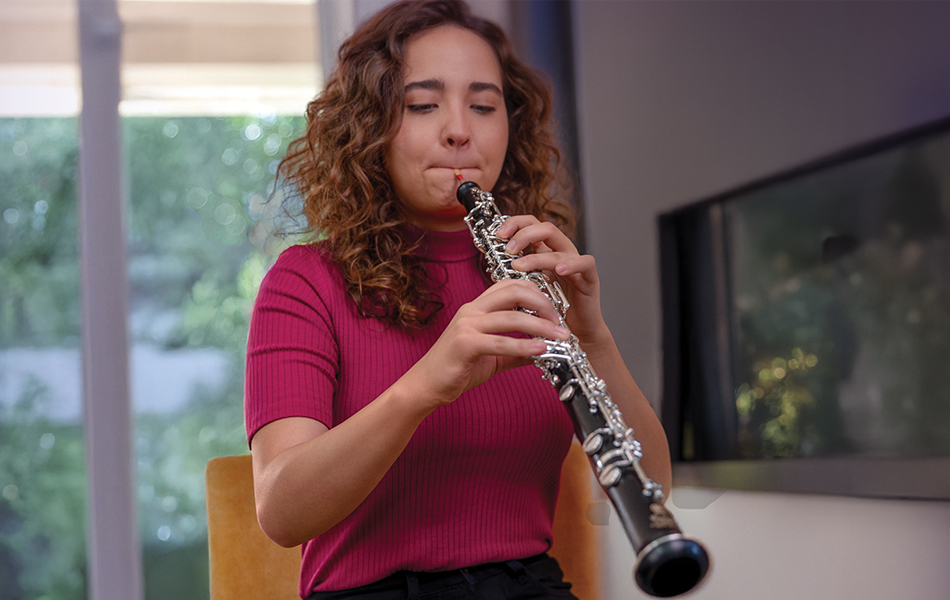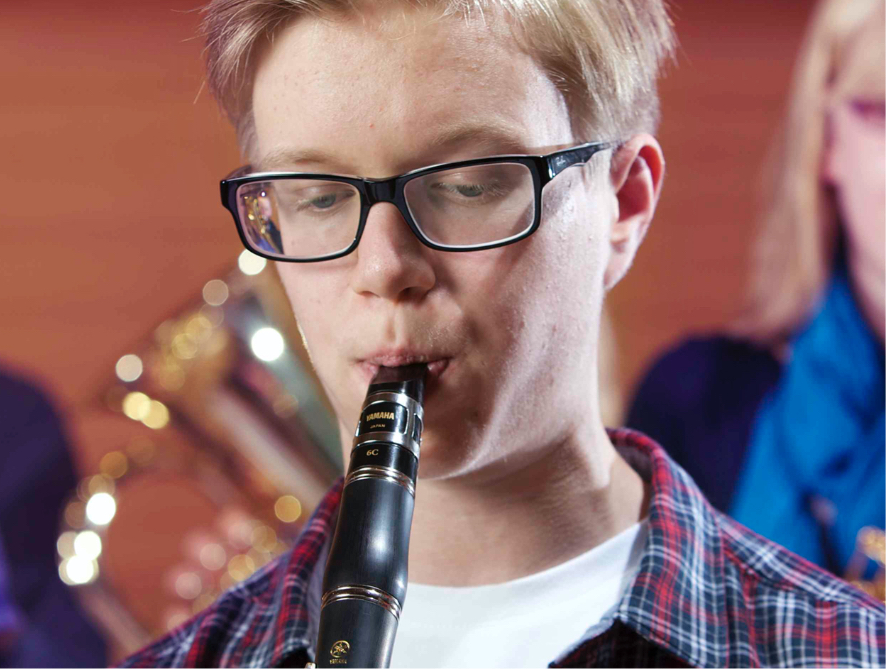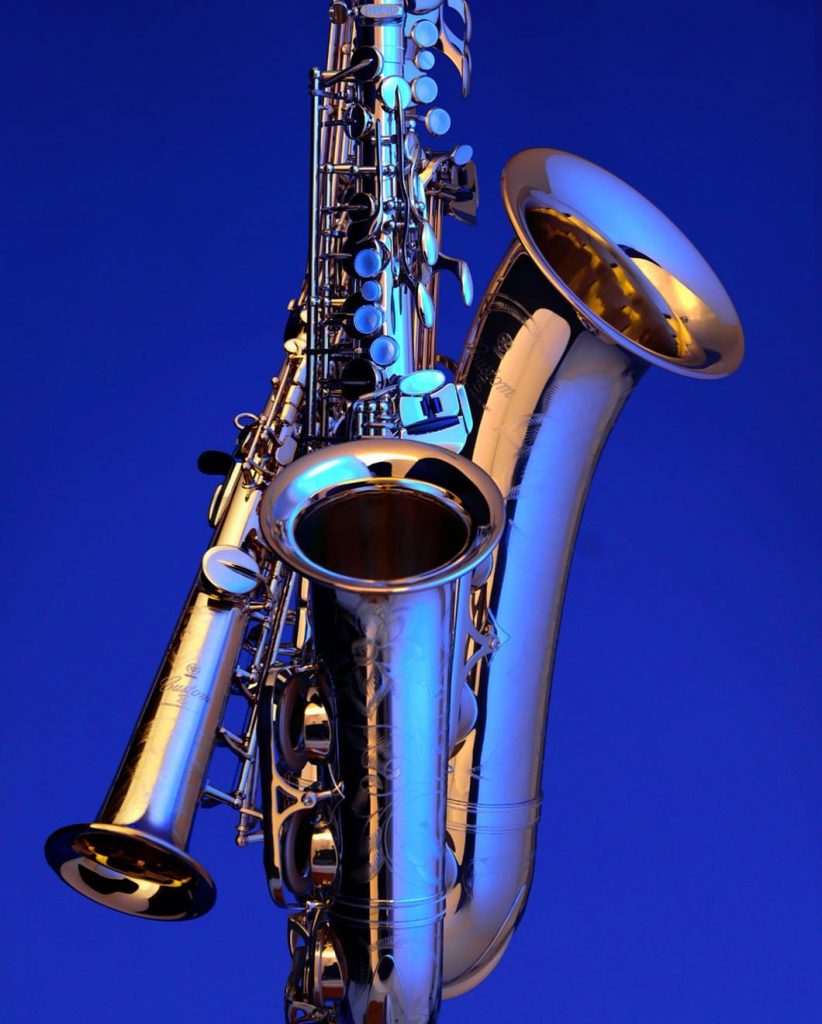The Woodwind Family, Explained
An overview of woodwind instruments and how they work.
The most common woodwind instruments are flute, piccolo, recorder, clarinet, saxophone, oboe and bassoon. Each of these instruments has several variations based on size and range. What makes each unique, and what makes woodwinds different from other types of musical instruments?
Here’s a guide to the woodwind family, including a description of how each instrument is constructed and played. First, though, let’s answer the question …
What Defines a Wind Instrument?
Woodwinds are, as their name implies, wind instruments. The player blows air into a mouthpiece or sound hole, which creates a column of air inside the instrument that causes its body to vibrate and make a sound. Wind instruments are also characterized by being monophonic; that is, they can only create one note at a time.
The same, of course, can be said of brass instruments, so what makes woodwinds different? Some of it is semantics. Back in the 17th century, early orchestral versions of what today are classified as woodwinds were made of wood. At that time, trumpets and trombones made of brass already existed, so the contrast was notable.
Many woodwinds, such as recorders, piccolos, clarinets, oboes and bassoons, are still made of wood, but others, such as flutes and saxophones (whose contemporary versions were developed over the last two hundred years or so), are not.
Another factor that separates woodwinds from brass instruments is the mechanism for changing pitches. Unlike the valves used in trumpets and tubas or the slides in trombones, woodwinds utilize holes on their body (called tone holes) that the player covers in various combinations to create different notes.
On recorders and some flute instruments (such as a wooden flute), the musician uses their fingers to close the holes. On most other woodwinds, changing pitch is accomplished by pressing keys that open and close the holes. Some instruments, such as tenor and bass recorders, combine keys and finger holes.
Two Types of Woodwinds and Two Kinds of Reed Instruments
From a sound production standpoint, there are two primary types of woodwind instruments: flute and reed. Flute instruments, which include flutes, piccolos and recorders, are cylindrical and require the player to blow either across or directly into a hole in the instrument. Within the category of reed instruments, you’ll find two variations: single-reed and double-reed.
Single-reed instruments such as saxophones and clarinets have a mouthpiece with a reed — a thin strip of material usually made from the stem of a cane plant — attached to it. The air entering the mouthpiece from the musician’s mouth makes the reed vibrate, which in turn vibrates the air column in the instrument, causing a sound to be produced.
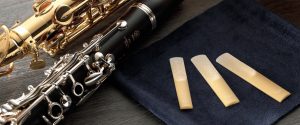
Double-reed instruments such as oboes or bassoons work similarly, but their mouthpieces contain two flat reeds aligned face to face and attached to a metal pipe that fits into the instrument.
Flute and Piccolo
Modern flutes are typically made of silver or gold, though some are silver with platinum plating. The various materials have different resonant properties with distinctive tonal qualities. Gold flutes are less bright and thus “warmer”-sounding than silver ones. Platinum-plated flutes are known for their crisp highs and clear tone.
A flute is considered a transverse-style instrument because the player holds it to the side and blows air across the sound hole, not directly into it, as with a recorder. The most common type is the concert flute, which features a three-octave range, with middle C usually its lowest note. Its distinctive breathy tone makes it an excellent melody instrument in orchestral settings. It is also sometimes used as a lead instrument in jazz ensembles.

The alto flute is a variant pitched a fourth lower than a concert flute. Another less common variation is the bass flute, which sounds two octaves lower than a concert version.
Alto and bass flutes require larger bodies to achieve their lower ranges (the bigger the space inside the instrument, the lower the notes it can produce). So as not to make the flute so long that it’s impossible to reach all the keys, these instruments feature J-shaped head joints (the part of the flute where the mouth hole is). Bass flutes are sometimes played with the player sitting and the flute in a vertical orientation.

The piccolo is similar to the flute in design, although it is generally made of wood, not metal, and is about half the size. Its range is an octave higher than the concert flute and is the highest in the woodwind family.

Recorder
The recorder is a flute-type instrument that’s blown from the end. Its simple design makes it easy to learn and inexpensive, which makes it an ideal first instrument for students. The flip side of that simplicity is a lack of tonal expressivity.

The recorder’s history is unique. It was invented in the 16th century, became quite influential in baroque music in the 17th and 18th centuries, fell out of favor in the late 18th century and had a resurgence in the middle of the 19th century that continues today.
Contemporary recorders are made of wood or synthetic resin and come in six different sizes, with different ranges but consistent fingering. From lowest to highest, these include Great Bass, Bass, Tenor, Alto, Soprano and Sopranino. The most common is the Soprano.
Recorders feature either Baroque (“English Style”) fingering or German Style fingering. The former is more versatile and can produce all the notes within its range. The latter is easier to play in its home key, but not all the notes in other keys can be played in tune.

Clarinet
Clarinets are single-reed, wood-bodied instruments that produce distinctive tones ranging from mellow to nasal to strident. Their four-octave range is the widest of all woodwinds.
Cylindrical in shape, with a small, flared bell at one end, clarinets come in several varieties, but the most common is the B♭ soprano. Other variations include the A clarinet, pitched just a semitone lower than the B♭ clarinet, and the E♭ clarinet, which is a fourth higher.
Two others — the alto and the bass clarinet — are lower pitched and thus require larger bells to increase their size. The alto clarinet is pitched an octave below the E♭ model, and the bass clarinet is an octave below the B♭ clarinet.
The clarinet is mainly an orchestral instrument but also serves as a solo instrument in jazz and other musical genres such as klezmer. Because it has significant similarities in fingering and mouth technique (embouchure) to the saxophone, many sax players also play clarinet.
Saxophone
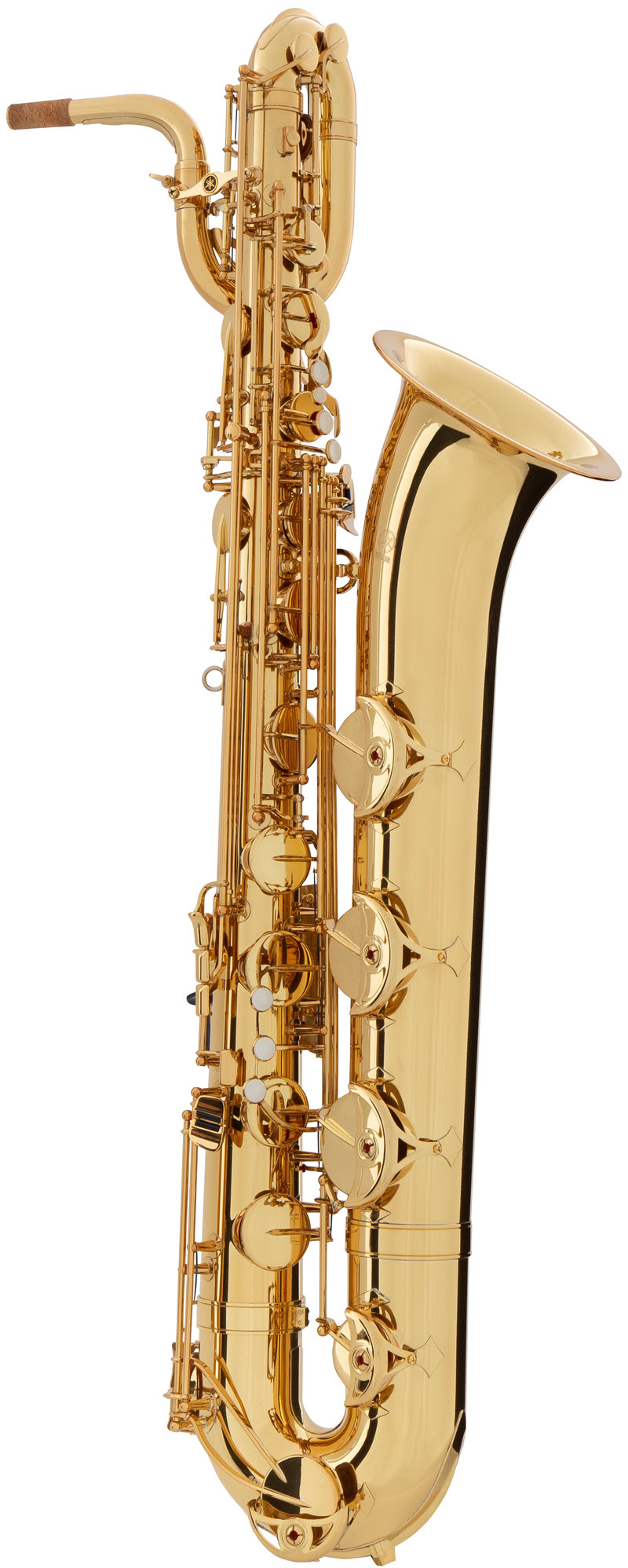
Invented by Adolphe Sax in the 1840s, the saxophone is made of brass but is considered a woodwind instrument because its mouthpiece uses a single-reed design to vibrate its body. Each of the four main saxophone types — soprano, alto, tenor and baritone — have a two-and-a-half octave range.
The highly expressive tone of the saxophone has been compared by many to similarities to the human voice. A skilled player can play slow and languid or extremely fast, bend notes, and create growling and fluttering effects. As a result, saxes excel as melody or lead instruments.
Saxes are also commonly used as section instruments. In an orchestra, they’re part of the woodwind section. In jazz, rock, R&B and pop, they typically play in sections (along with trumpets and trombones) that are capable of creating large-sounding chords or unison stabs that can be legato or staccato.
Oboe

The oboe is a double-reed instrument with a conical bore and a small bell at the end. Originating in 17th-century France, the contemporary oboe is mainly used in classical and other orchestral music.
Considered one of the harder woodwinds to learn, oboes have a range of about two-and-a-half octaves, and their tone varies considerably depending on whether they’re played in their lower or upper registers. Low notes are warm and smooth, whereas high notes can be bright and cut through the rest of the orchestra. Oboes are often used for melodic passages. Many well-known classical composers, including Bach, Mozart, Handel, Schumann and Vivaldi, wrote pieces featuring oboes.
The standard oboe is pitched to C major. Two variants, the oboe d’amore and the oboe cor anglaise, have lower ranges. The former is pitched to A and the latter to F. In orchestras, oboes traditionally play an A note before the music starts; this serves as the reference that other instruments tune to. Here’s a posting that explains the reasons why.
Bassoon
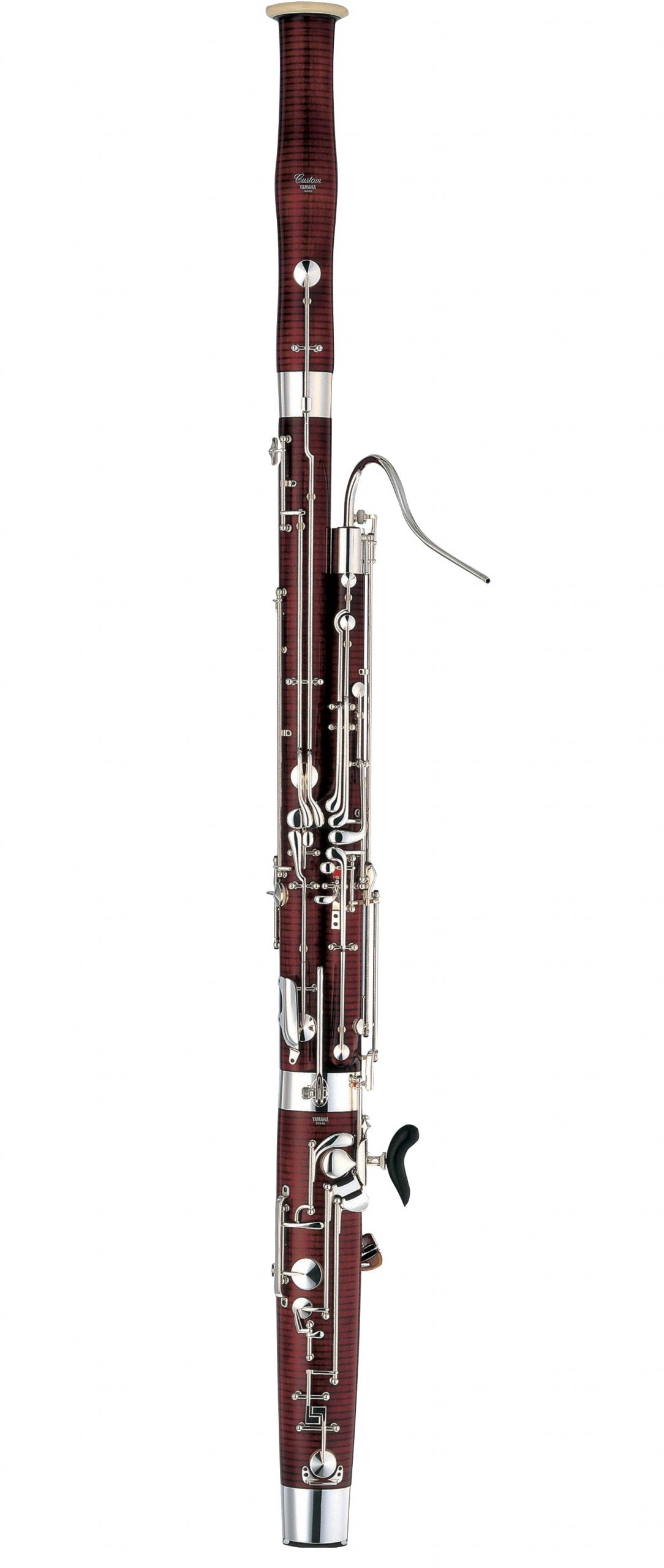
The bassoon is a double-reed woodwind made of a long, conical wooden pipe that doubles over on itself and has a small bell at the end. Its unique timbre is warm and dark, especially in its lower ranges, and it offers a great deal of expressivity.
With a range of about three-and-a-half octaves, from B♭ to E, the bassoon is mainly used as a section instrument (orchestras typically have up to four bassoonists), playing harmonies underneath other woodwinds. Sometimes bassoons play solo parts.
Its unique mouthpiece, called a bocal, is a curved metal tube with a double reed at one end. Most bassoonists have several bocals of slightly different lengths, which they use interchangeably to reach different pitch ranges.
At close to four and a half feet in length, a bassoon is big and somewhat unwieldy. It’s easier to play sitting down, but some bassoonists play standing up for better instrument projection and audience visibility.
A variant is the contrabassoon, which is even bigger than a standard bassoon and has a range an octave below, going down to B♭, allowing it to play the lowest notes in the orchestra.
Learn more about Yamaha flutes, piccolos, recorders, clarinets, saxophones, oboes and bassoons.















